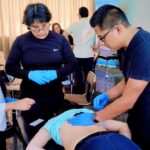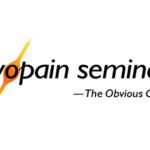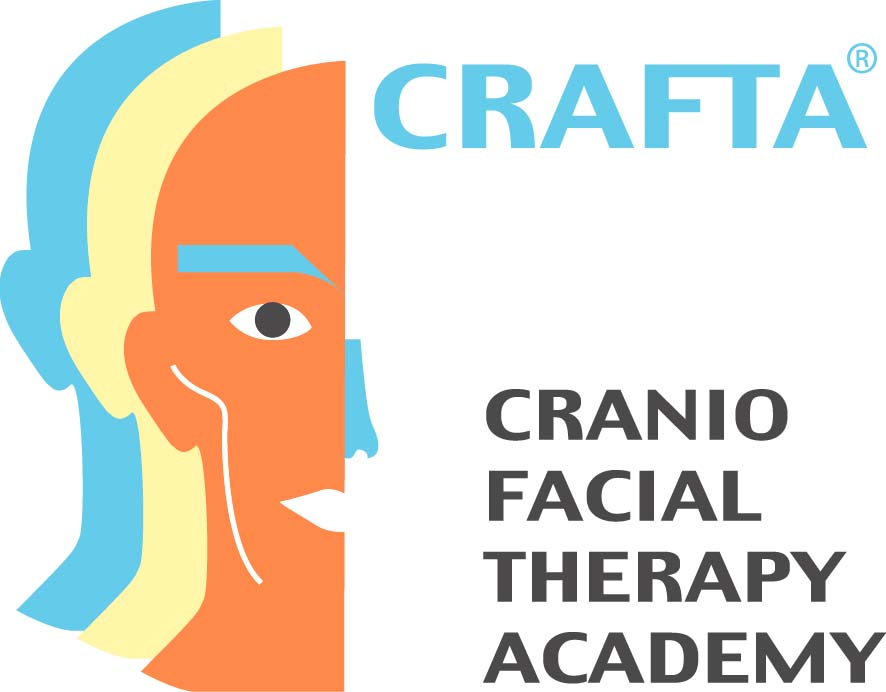While offering dry needling courses has always been the focus of Myopain Seminars, sometimes clinicians wonder why we offer several other course programs, such as the courses of the Cranio Facial Therapy Academy (CRAFTA), the Men’s Health Physical Therapy course, the Exergaming course, the Headache Management course (coming in 2024!), and the Manual Trigger Point Therapy courses. The simple answer to the question is “because in our clinic, we combine the insights, skills, and knowledge from all courses to help our patients recover and live productive and happy lives without persistent pain or problems with moving around.” We think that combining different complementary approaches makes a lot of sense and are happy to share this with our students.
As I have been very fortunate to travel around the globe teaching courses and speaking at conferences for many years now, I have met many well-known and outstanding clinicians and teachers, such as Freddy Kaltenborn, Mariano Rocabado, Olaf Evjenth, Andry Vleeming, Robert Schleip, Leon Chaitow, Jo Nijs, César Fernández-de-las-Peñas, Matteo Castaldo, Orlando Mayoral, and many others, not to mention a long list of excellent physical therapy leaders in the US, including Stanley Paris, Ola Grimsby, Chad Cook, Ken Olson, etc. I am sure I missed many clinicians who have influenced my life and career, but please do not take it personally! The list is not meant to be all-inclusive. I mention this only because, especially when I meet PT thought leaders abroad, I always wonder whether what they teach is readily available in the US, and that brings us to Harry von Piekartz, founder of the CRAFTA course program.
There are several solid course programs available in the US with a focus on the temporomandibular region, craniofacial pain, headaches, etc., but in my humble opinion, the CRAFTA course program takes this specialty area to a different level. Harry von Piekartz has a broad background as a senior instructor of the International Maitland Teacher Association (IMTA), a NOI instructor, and the founder of the CRAFTA organization. He is a professor at the Hochschule Osnabruck Fakultat Wirtschafts- und Sozialwissenschaften (University of Applied Science) in Germany and Study Director of the Master of Science in Musculoskeletal Therapy. He conducts and publishes many research studies in the areas of the cervical spine, temporomandibular joints, neurodynamics, manual therapy, bruxism, facial emotion recognition, to name a few.
Harry completed his Master of Science degree in Physiotherapy at the University of Leuven (Belgium) where he prepared the thesis “The Neurodynamic Testing of the Mandibular Nerve: Reliability and norm-data.” In 2005, he received his Ph.D. in Rehabilitation Science from Staffordshire University (UK), where he focused on “Neuromusculoskeletal Characteristics in Pediatric Headache.”
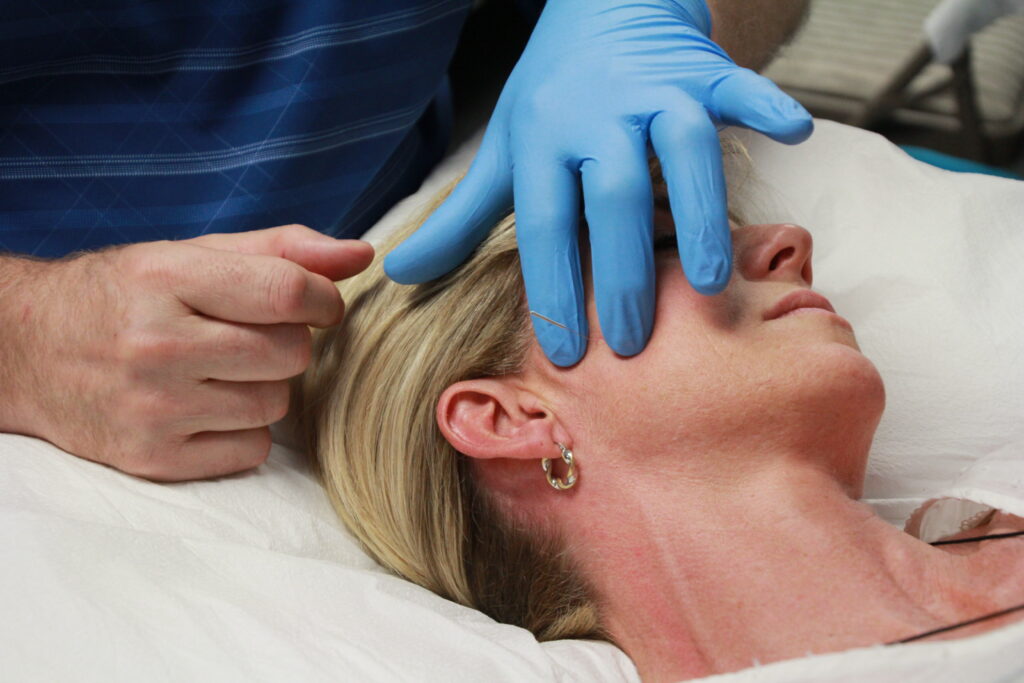 When Harry taught the first CRAFTA course in the US, he challenged me to show how dry needling of the lateral pterygoid muscle could potentially improve one of the students. He was impressed and pleasantly surprised. Later, he admitted that he was rather skeptical about dry needling, but we both realized very quickly that the CRAFTA courses and our dry needling courses are indeed very complimentary. Harry and I have since taught several workshops together, most notably this past year in Madrid at the Escuela Universitaria de Fisioterapia ONCE. Combining the CRAFTA and Myopain Seminars clinical reasoning processes during the workshop resolved one of the students’ long-standing neck and jaw pain issues. I have taught several CRAFTA dry needling courses in the Netherlands; the combination is phenomenal.
When Harry taught the first CRAFTA course in the US, he challenged me to show how dry needling of the lateral pterygoid muscle could potentially improve one of the students. He was impressed and pleasantly surprised. Later, he admitted that he was rather skeptical about dry needling, but we both realized very quickly that the CRAFTA courses and our dry needling courses are indeed very complimentary. Harry and I have since taught several workshops together, most notably this past year in Madrid at the Escuela Universitaria de Fisioterapia ONCE. Combining the CRAFTA and Myopain Seminars clinical reasoning processes during the workshop resolved one of the students’ long-standing neck and jaw pain issues. I have taught several CRAFTA dry needling courses in the Netherlands; the combination is phenomenal.
To learn more about the CRAFTA approach, we have several webinars on the Myopain Seminars website:
- Marisa Hoffmann, one of the CRAFTA instructors, gave a comprehensive overview of the CRAFTA approach during a webinar we featured in the middle of the pandemic.
- In another webinar, Harry von Piekartz presented the results of his TMD Delta Study, which explored the most useful tests in PT practice.
- Learn more about assessing and treating patients suffering from bruxism, also presented by Harry von Piekartz.
- Michiel Trouw, another CRAFTA instructor, shared his vast knowledge and experience in working with patients with tinnitus from a neuromusculoskeletal point of view.
What makes the CRAFTA course so special? I believe that only the CRAFTA courses approach patients from a very broad yet specific point of view, combining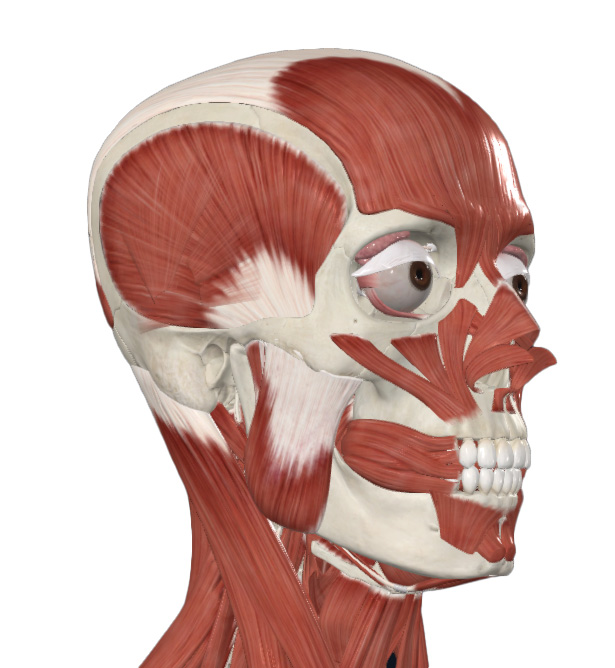 biomechanics, neurodynamics, pain science, rehabilitation, pediatrics, and cranial tissue and cranial-neural techniques. The CRAFTA courses demand active involvement from patients and address several related regions, including the temporomandibular region, the craniofacial region, the craniocervical region, and the cranioneural region. Dry needling can contribute to most of these issues.
biomechanics, neurodynamics, pain science, rehabilitation, pediatrics, and cranial tissue and cranial-neural techniques. The CRAFTA courses demand active involvement from patients and address several related regions, including the temporomandibular region, the craniofacial region, the craniocervical region, and the cranioneural region. Dry needling can contribute to most of these issues.
Myopain Seminars offers a specific orofacial dry needling course, and the overlap with the CRAFTA courses is quite obvious. But more general clinicians, who perhaps attended the regular dry needling courses, would benefit from the CRAFTA courses, such as the CRAFTA Special Topics Course set for January 20-23, 2024, in Bethesda, MD. The next cohort of the CRAFTA Level 1 course program starts on November 7, 2024, also in Bethesda.
The Physical Therapy Board of Craniofacial and Cervical Therapeutics (PTBCCT) recognizes the CRAFTA courses for credit towards the application to sit for the examination to become a Certified Cervical & Temporomandibular Therapist (CCTT) as well as to fulfill the annual continuing education requirements to maintain status as a CCTT.
I am sure you will agree that combining the CRAFTA Certification Program with the Myopain Seminars Dry Needling Certification Program will make you a better clinician!
President / CEO, Myopain Seminars
Dry Needling and CRAFTA courses
The Dry Needling 1 course is an excellent starting point for learning the fundamentals of dry needling therapy. With a focus on the safe and effective application of dry needling techniques, you will gain a solid understanding of myofascial trigger points, needling techniques, precautions, and how to apply these techniques in clinical practice.
The CRAFTA-Special Topic Course addresses the mechanisms of cranio-cervical and vestibular-ocular (dys) function of postural control, the assessment of the cervical and oculomotor system, various aspects of primary and secondary headaches, including pediatric headaches, the impact of orthodontics, balance and equilibrium, motor dysfunction and neuromusculoskeletal dysfunctions of the eyes, spine, peripheral nervous system, and craniofacial-mandibular region. Students will learn advanced clinical tests and treatment strategies.
The CRAFTA 1 course focuses on the assessment and management of the craniomandibular-facial region and its functional relations. Students will learn about pain mechanisms of the relevant craniomandibular structures, the function of the temporomandibular joint (TMJ), and the neurophysiological, biomechanical, and functional relationships with the cervical spine.
